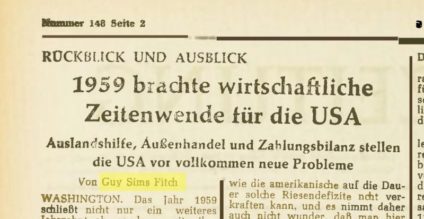Skeptic magazine reveals an Alan Sokal-style hoax on the journal Cogent Social Sciences–an attempt to mock both what the authors perceive to be the excesses of feminist academia and open-access or pay-to-publish journals. So far, they have at least succeeded in getting a lot of attention, pro and con.
“The Conceptual Penis as a Social Construct: A Sokal-Style Hoax on Gender Studies”
by Peter Boghossian and James Lindsey
Skeptic
May 19, 2017
The androcentric scientific and meta-scientific evidence that the penis is the male reproductive organ is considered overwhelming and largely uncontroversial.
 That”™s how we began. We used this preposterous sentence to open a “paper” consisting of 3,000 words of utter nonsense posing as academic scholarship. Then a peer-reviewed academic journal in the social sciences accepted and published it.
That”™s how we began. We used this preposterous sentence to open a “paper” consisting of 3,000 words of utter nonsense posing as academic scholarship. Then a peer-reviewed academic journal in the social sciences accepted and published it.
This paper should never have been published. Titled, “The Conceptual Penis as a Social Construct,” our paper “argues” that “The penis vis-à -vis maleness is an incoherent construct. We argue that the conceptual penis is better understood not as an anatomical organ but as a gender-performative, highly fluid social construct.” As if to prove philosopher David Hume”™s claim that there is a deep gap between what is and what ought to be, our should-never-have-been-published paper was published in the open-access (meaning that articles are freely accessible and not behind a paywall), peer-reviewed journal Cogent Social Sciences. (In case the PDF is removed, we”™ve archived it.)
Assuming the pen names “Jamie Lindsay” and “Peter Boyle,” and writing for the fictitious “Southeast Independent Social Research Group,” we wrote an absurd paper loosely composed in the style of post-structuralist discursive gender theory. The paper was ridiculous by intention, essentially arguing that penises shouldn”™t be thought of as male genital organs but as damaging social constructions. We made no attempt to find out what “post-structuralist discursive gender theory” actually means. We assumed that if we were merely clear in our moral implications that maleness is intrinsically bad and that the penis is somehow at the root of it, we could get the paper published in a respectable journal. Read more.

 In 1943, fed up with modernist poetry, two Australian servicemen invented a fake poet and submitted a collection of deliberately senseless verses to a Melbourne arts magazine. To their delight, they were accepted and their author hailed as “one of the most remarkable and important poetic figures of this country.” In this week”™s episode of the Futility Closet podcast we”™ll tell the story of the Ern Malley hoax, its perpetrators, and its surprising legacy in Australian literature.
In 1943, fed up with modernist poetry, two Australian servicemen invented a fake poet and submitted a collection of deliberately senseless verses to a Melbourne arts magazine. To their delight, they were accepted and their author hailed as “one of the most remarkable and important poetic figures of this country.” In this week”™s episode of the Futility Closet podcast we”™ll tell the story of the Ern Malley hoax, its perpetrators, and its surprising legacy in Australian literature. In December 2015, readers at women”™s site xoJane were enthralled and filled with all-caps rage by Rachel Brewson, a self-described “giant liberal” who
In December 2015, readers at women”™s site xoJane were enthralled and filled with all-caps rage by Rachel Brewson, a self-described “giant liberal” who  You might be forgiven for not knowing her work — after all, she has a common name, one that she shares with other similarly successful authors on Amazon. Until this week, she had dozens of health, dieting, cooking, and weight loss ebooks to her name. She published over a dozen ebooks on Amazon this year — five ebooks alone this month. And Moore would even work with other authors — like Nina Kelly, Andrew Walker, and Julia Jackson — who have all published about a dozen ebooks each this year as well.
You might be forgiven for not knowing her work — after all, she has a common name, one that she shares with other similarly successful authors on Amazon. Until this week, she had dozens of health, dieting, cooking, and weight loss ebooks to her name. She published over a dozen ebooks on Amazon this year — five ebooks alone this month. And Moore would even work with other authors — like Nina Kelly, Andrew Walker, and Julia Jackson — who have all published about a dozen ebooks each this year as well. Guy Sims Fitch had a lot to say about the world economy in the 1950s and 60s. He wrote articles in newspapers around the globe as an authoritative voice on economic issues during the Cold War. Fitch was a big believer in private American investment and advocated for it as a liberating force internationally. But no matter what you thought of Guy Sims Fitch”™s ideas, he had one big problem. He didn”™t exist.
Guy Sims Fitch had a lot to say about the world economy in the 1950s and 60s. He wrote articles in newspapers around the globe as an authoritative voice on economic issues during the Cold War. Fitch was a big believer in private American investment and advocated for it as a liberating force internationally. But no matter what you thought of Guy Sims Fitch”™s ideas, he had one big problem. He didn”™t exist.